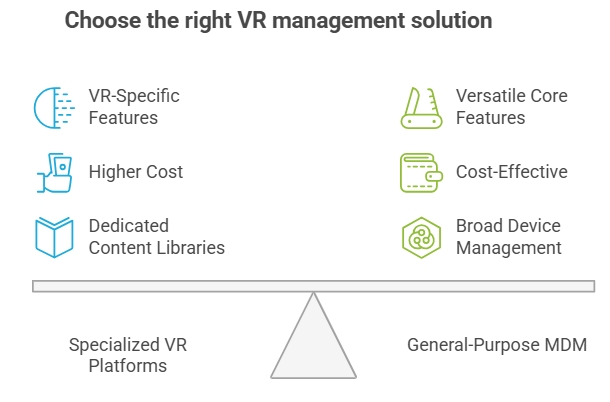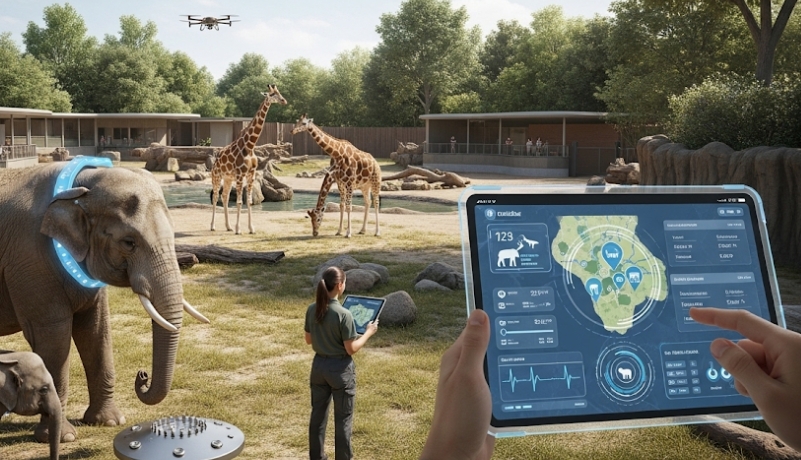The modern zoo is a complex ecosystem. It's a place of animal care, guest services, retail, and education, all running simultaneously. Managing this intricate operation with fragmented systems—one for ticketing, another for animal records, and yet another for staff schedules—creates data silos and inefficiency. This article explores how a strategic approach to software can help connect departments and data, ultimately empowering zoo management to improve both operational efficiency and the guest experience.
1What is Zoo Management Software? It's More Than Just Ticketing
At its core, zoo management software is a set of tools designed to streamline the diverse operations of zoos, aquariums, and wildlife parks. Far from being just a ticketing system, its true value lies in its ability to centralize and share information across different departments.
Instead of a single, monolithic piece of software, think of it as a connected suite of tools that can manage everything from visitor entry to animal health records. Its key benefit is to eliminate manual processes and ensure all data is consistent and accessible, allowing for smarter, data-driven decisions.
2Core Software Features That Empower Zoo Management
A robust zoo management platform should offer a suite of integrated features. These tools work together to create a cohesive operational environment.
- Ticketing & Admissions Management: This is the public-facing heart of the software. It automates online ticket sales, manages reservations, and provides mobile entry options. This not only enhances the guest experience but also provides real-time data on visitor numbers and peak hours.
- Membership & Fundraising Management: Beyond simple sales, a good system tracks member information, automates renewal reminders, and manages donations. This strengthens the relationship with the community and provides a clear picture of donor engagement.
- Animal Health & Welfare Management: This is where the software’s specialized nature truly shines. It allows zookeepers and veterinarians to digitize animal health records, vaccination schedules, and dietary plans. Centralized data ensures consistent, high-quality care.
- Operations & Inventory Management: From tracking gift shop inventory to scheduling equipment maintenance, these tools help optimize resource allocation. It reduces waste, prevents stockouts, and ensures all essential equipment is in top condition.
- Data Analytics & Insights: With all data in one place, managers can use dashboards and reports to analyze visitor traffic, sales trends, and membership growth. These insights are crucial for strategic planning and resource allocation.

3The Strategic Approach to Implementing Zoo Software
After you know what zoo management software does, the next step is to change your mindset. Instead of adding tools randomly, you need a clear strategy from the start. This "strategic approach" makes sure your software solves real problems.
- Step 1:Define Your "Why" — Prioritize Business Goals
- For Visitor Experience: Focus on ticketing and membership software that offers easy online buying and mobile tickets.
- For Animal Health: Focus on an animal health management module that digitizes records for real-time tracking and sharing.
- For Efficiency: Look for operations software to automate tasks, or MDM software like AirDroid Business to secure and manage all your team's mobile devices.
Before you look for any software, ask: What is our main goal? Is it to boost visitor satisfaction, improve animal care, or cut costs? Your goal will decide which features are most important.
- Step 2:Connect Everything — Break Down Data Silos
- Link your core software: Make sure your software can “talk” to each other. For example, when a visitor buys a ticket, that data should automatically sync with your marketing tools.
- Automate workflows: Use these connections to set up automatic tasks. For instance, when a vet updates a feeding plan, the system can automatically send a task to the zookeeper's device. If a device fails, MDM software alerts IT right away.
Fragmented systems create “data silos” where info is trapped. The core of a strategic approach is to make data flow automatically and freely between departments.
- Step 3:Build a Phased Roadmap
- Phase 1 (Core Business): Start with the most critical system, like ticketing and membership.
- Phase 2 (Core Operations): After Phase 1 is stable, add key modules like animal health management. At this point, you should also deploy MDM for devices using these critical apps.
- Phase 3 (Full Optimization): Expand your software to other departments and complete your MDM rollout for all devices.
Don't try to replace everything at once. Create a step-by-step plan.
Remember, software is just a tool. A good strategy is what turns it into a powerful solution for your zoo.
4Leveraging Mobile Device Management (MDM)
As zoo operations become more mobile, MDM is a key tool for security and efficiency. This section explores its specific functions and a real-world case study.
MDM Features That Empower Your Team
- Remote Access for Troubleshooting: Your IT team can’t be everywhere at once. MDM tools like AirDroid Business allow administrators to remotely view and control a zookeeper’s tablet or a ticket vendor’s phone to quickly diagnose and fix issues, preventing operational downtime.
- Automated App Deployment: When a new animal health app is released, you don’t want your team manually updating hundreds of devices. MDM allows for remote, bulk installation and updates, ensuring everyone uses the latest, most secure software.
- Device Monitoring & Geofencing: With vast, open spaces, devices are at risk of being lost or stolen. MDM software provides real-time location tracking and geofencing. If a device leaves a designated area, it can be automatically locked or wiped, protecting sensitive data.
- Kiosk Mode: Kiosk devices in gift shops or exhibits need to be secure. AirDroid Business’s Kiosk Mode locks devices to a single app or a set of approved apps, preventing unauthorized use and enhancing device longevity.
Customer Case Study: How a Park Used MDM to Simplify Management
Here is a look at how a real-world zoo and water park used a strategic approach to software to solve a specific problem.
- Client Background: A major zoo and water park, operating with over 300 devices used by staff across its extensive grounds.
- Challenge: The park struggled with the decentralized nature of its mobile devices. With devices scattered across different areas, the IT team faced major challenges with troubleshooting, security, and app updates, especially as operations varied seasonally.
- Solution & Application: The client implemented AirDroid Business to centralize their device management.
- Remote Troubleshooting: When a POS terminal in the water park malfunctioned, the IT team used remote access to resolve the issue in minutes without traveling to the site, ensuring no loss in revenue.
- Mass File Deployment: Ahead of the summer season, the team used the platform’s file transfer feature to push updated ticketing and promotional materials to all 300 devices simultaneously, drastically reducing setup time.
- Secure Kiosk Mode: Interactive information kiosks and point-of-sale devices were locked down in Kiosk Mode, ensuring they were only used for their intended purpose and protecting them from tampering.

5Conclusion: Empowering the Future of Zoos with Technology
Today's zoo management requires more than just traditional tools. By strategically adopting software that enables data sharing and optimizes workflows, zoos can connect their diverse operations, improve guest experiences, and ensure the highest standards of animal welfare. The future of zoo management is not about one piece of software, but about using a collection of smart, connected tools to build a more efficient, secure, and sustainable operation. The integration of IoT sensors enables advanced animal monitoring and enhances zoo operational efficiency, while looking ahead, the integration of technologies like AI for visitor flow predictions promises to further transform how zoos operate, making a data-driven approach more vital than ever.





Leave a Reply.